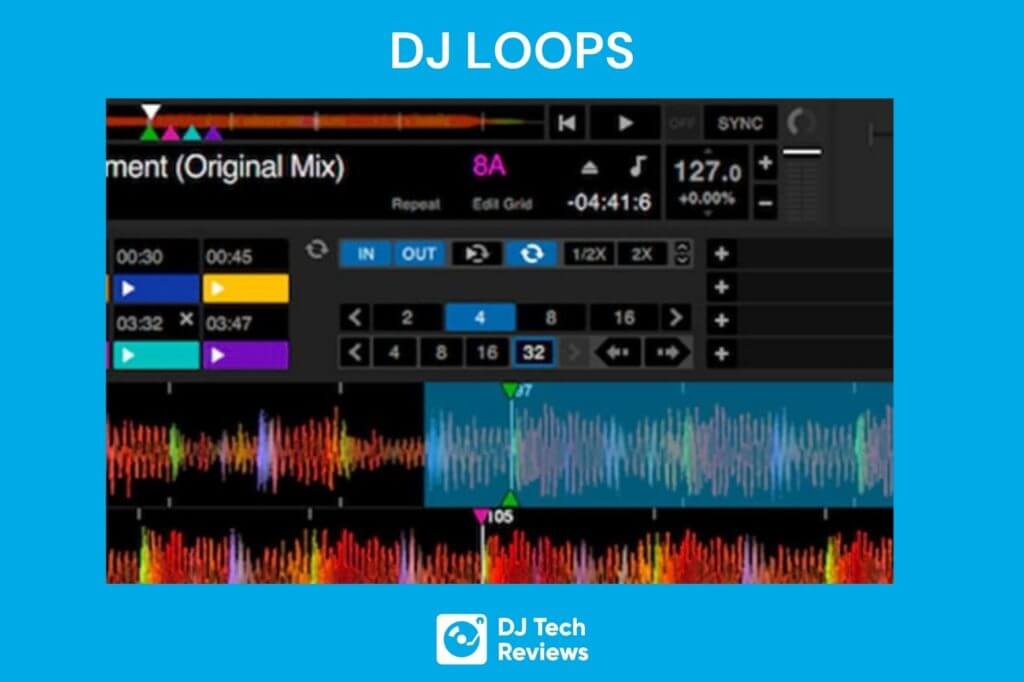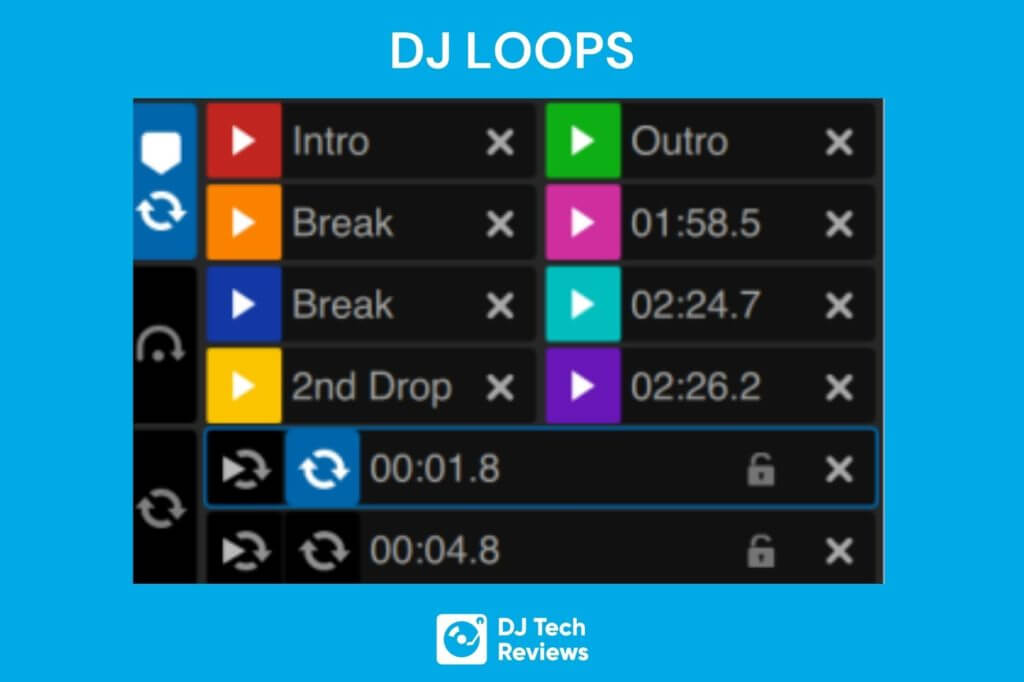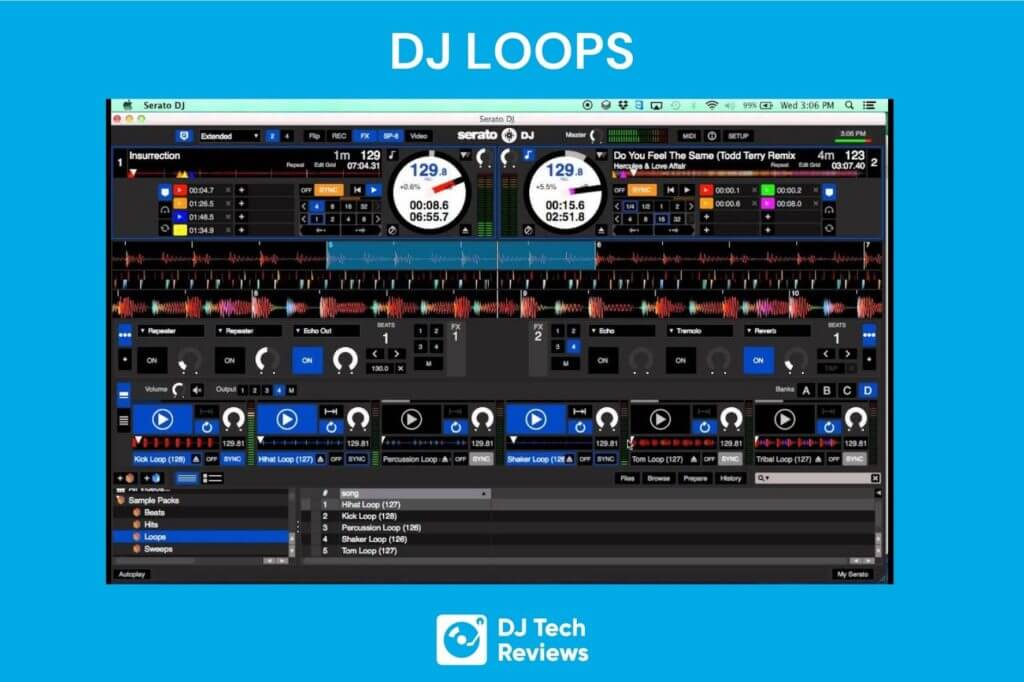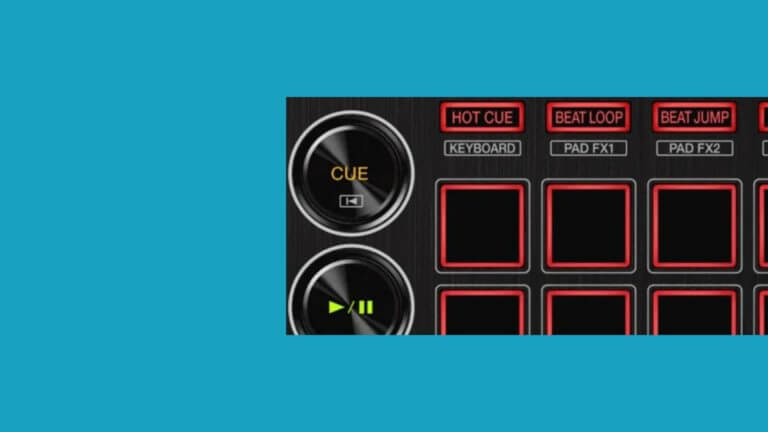There are many important and key aspects of being a DJ and correctly operating a DJ controller. One of those important areas is figuring out what are DJ loops and how to use DJ looping best.
Understanding and properly executing DJ loops can greatly enhance your sets, both through the technical side of sound mixing as well as via creative alterations and transitions.
In this brief guide, we’ll go over and break down what DJ loops are, how to set them up, as well as the best ways that you can properly utilize them when performing.
What are DJ Loops?
Before we can get into breaking down how to use them, we must understand what a DJ loop even is. A DJ loop is a specific section of a song that is essentially put on repeat. These DJ loops can usually consist of between four, eight, 16, or 32 beats, and are set through the use of your DJ software.

RELATED ARTICLES: How to DJ Deep House (Just Like a Headliner)
Creating DJ Loops
Based on the type of DJ equipment you’re using, you may or may not be able to set or trigger a DJ loop directly from the controller itself, though this is strongly on a case-by-case basis.
You’ll need to check on your specific controller’s hardware and software to see what looping options are available to you.
Some controllers and mixers will allow you to create DJ loops, often with a designated button listed along the deck. In these instances, you should have the ability to either extend or shorten a loop’s length directly from the controller itself. Keep in mind that, these features are more often found on higher-end controllers.
If you’re looking to get a beginner DJ controller, be sure to take some time and investigate which ones have this as a function.
The good news is that, even if it isn’t a native aspect of the controller itself, looping is almost always available via your computer using the DJ software.
How To Set Up A DJ Loop
To set a DJ loop up, you’ll need to first set a starting point and an endpoint.
These will act as anchors to the loop and will determine how long it is as well as where it starts and stops. Generally, this area should be a clean bar with as few disruptive sounds around either point as possible.
You’ll also want to make sure that the beats of a bar align with their respective area. In other words, your start should properly align with the first beat of that bar while its end should run down to the end of the bar or phrase.
Proper DJ Loop Length
When it comes to a DJ loop’s proper length, you ideally want it to be divisible by the bar’s overall length.
This means that, if you wanted a shorter loop length, you’d need to have either four or two beats.
While it isn’t always the case, setting odd-number beat loop lengths can be very problematic sound-wise.
For example, while a two or four-beat length loop works fine, a three-beat length loop can likely create a fairly disjointed sound, especially when layered on top of a song that is running at a four-beat interval.

Using DJ Loops When Mixing
DJ loops are a great way to assist a DJ when mixing a track or while performing. As loops are great when beatmatching tracks, you can use them to assist your mixing to great effect.
For example, setting a loop at the start of a track you plan on mixing into can open you up to a consistently repeatable pattern that you can beat matches to from the first track.
By using the basic aspects and components of a track, you can learn to effectively beat a match, with looping being one of the fastest, easiest, and most effective methods of maintaining a certain pattern.
Once you’ve managed to effectively beat match the two tracks together, you can then release the loop for the second track transition.
DJ Looping In The Middle Of A Mix
DJ loops are also great when currently in the middle of a mix.
As some tracks have a shorter transition window, you may need to use the loop function to keep a certain section continuously going until you can seamlessly complete the transition.
This is useful, both for incoming tracks as well as outgoing tracks. In either instance, you’ll want to make sure that the loop sounds as natural and “part of the track” as possible.
You don’t, as an example, want a loop that cuts into a vocal, nor do you want to have large, sweeping pad effects cutting abruptly through your loop – on either side.
So be aware of those things.
DJ Looping At The End Of A Mix
When it comes to ending a track, it can be difficult to effectively outro out through simple mixing alone.
Once again, a successful DJ loop can work wonders in this area and shouldn’t be ignored.
Right before a track reaches it’s more difficult to pin down the outro section, you can find a specific, workable, section that can quickly be looped together.
This, like with the middle section, can be very useful in sustaining a track long enough to start and complete the transition without it coming across as jarring or otherwise disruptive.

RELATED ARTICLES: Essential DJing Transitions (Made Simple!)
Additional DJ Looping Things To Consider
In addition to helping you develop a more functionally technical aspect of mixing, looping is also a great way to build and foster your more creative side.
With some of the more common looping techniques, like the “loop roll” (where the loop length is progressively halved at consistent intervals), you can build up to – and create – some truly climactic sound drops.
As with the technical aspects, you’ll want to make sure that you practice your timing so that all of your loopings are as natural and seamless to the music as possible.
A loop roll can indeed be an awesome crowd-pleaser, but only if done right.
Done poorly, it can truly ruin an otherwise great performance.
Ultimately, once you understand what you’re doing, there is no limit to the number of things you can do with DJ loops.
From the more aforementioned technical techniques to the Loop Roll technique, to even things like “loop juggling” or “loop mashups” and “loop layering”.
The key is to practice and get your timing down.
That can’t be said enough.
Master your timing, and loops are a DJ’s best friend.
What are DJ Loops: Takeaway
By understanding DJ loops and knowing your music’s overall composition and sound structure, you can more effectively use these different techniques.
By practicing looping more and more, you’ll begin to understand where the most natural places in a song are that are the most open to being looped.
Looping is an incredibly useful tool for DJs and can if used effectively, have dramatic effects on your DJ and mixing performance. Make a point of practicing and learning the best loop placements.
Then, once you’re comfortable, consider incorporating these different techniques into your upcoming sets.




